How can i fix the QLabel to not clip the text when resizing? This is a widget that will be placed inside a QDialog eventually. So the resizing of the Dialog will happen if a user resizes the main dialog.
'''
Main Navigation bar
'''
################################################################################
# imports
################################################################################
import os
import sys
import inspect
from PySide2 import QtWidgets, QtCore, QtGui
################################################################################
# widgets
################################################################################
class Context(QtWidgets.QWidget):
def __init__(self):
super(Context, self).__init__()
# controls
self.uiThumbnail = QtWidgets.QLabel()
self.uiThumbnail.setMinimumSize(QtCore.QSize(100, 75))
self.uiThumbnail.setMaximumSize(QtCore.QSize(100, 75))
self.uiThumbnail.setScaledContents(True)
self.uiThumbnail.setAlignment(QtCore.Qt.AlignLeading | QtCore.Qt.AlignLeft | QtCore.Qt.AlignTop)
self.uiThumbnail.setObjectName('thumbnail')
self.uiDetailsText = QtWidgets.QLabel()
self.uiDetailsText.setAlignment(QtCore.Qt.AlignLeading | QtCore.Qt.AlignLeft | QtCore.Qt.AlignTop)
self.uiDetailsText.setWordWrap(True)
self.uiDetailsText.setTextInteractionFlags(QtCore.Qt.TextBrowserInteraction)
self.uiDetailsText.setOpenExternalLinks(True)
self.uiMenuButton = QtWidgets.QPushButton()
self.uiMenuButton.setFixedSize(QtCore.QSize(24, 24))
self.uiMenuButton.setFocusPolicy(QtCore.Qt.NoFocus)
# header layout
self.headerLayout = QtWidgets.QHBoxLayout()
self.headerLayout.setSpacing(6)
self.headerLayout.setContentsMargins(6, 6, 6, 6)
self.headerLayout.setAlignment(QtCore.Qt.AlignTop)
self.headerLayout.addWidget(self.uiThumbnail)
self.headerLayout.addWidget(self.uiDetailsText)
self.headerLayout.addWidget(self.uiMenuButton)
self.headerLayout.setAlignment(self.uiThumbnail, QtCore.Qt.AlignTop)
self.headerLayout.setAlignment(self.uiMenuButton, QtCore.Qt.AlignTop)
# frames
self.headerFrame = QtWidgets.QFrame()
self.headerFrame.setObjectName('panel')
self.headerFrame.setFrameShape(QtWidgets.QFrame.StyledPanel)
self.headerFrame.setFrameShadow(QtWidgets.QFrame.Raised)
self.headerFrame.setLayout(self.headerLayout)
# layout
self.mainLayout = QtWidgets.QHBoxLayout()
self.mainLayout.setSpacing(6)
self.mainLayout.setContentsMargins(0, 0, 0, 0)
self.mainLayout.addWidget(self.headerFrame)
self.setLayout(self.mainLayout)
self.setStyleSheet('''
#thumbnail {
background-color: rgb(70,70,70);
}
#panel {
background-color: rgb(120,120,120);
border-radius:3px;
}
''')
self.updateContext()
# methods
def updateContext(self):
self.uiDetailsText.setText('''
<span style="font-size:14px;">
<b>A title goes here which can wrap</b>
</span>
<br>
<span style="font-size:11px;">
<b>Status:</b> Additional details go here
<br>
<b>User:</b>
User information goes here
<br>
<b>About:</b> Some more information
<br>
<b>Date:</b> 2021-07-03
<br>
</span>
''')
################################################################################
# main
################################################################################
if __name__ == '__main__':
pass
app = QtWidgets.QApplication(sys.argv)
ex = Context()
ex.resize(500,70)
ex.show()
sys.exit(app.exec_())
I tried adding this and it didn't help at all...
# methods
def resizeEvent(self, event):
newHeight = self.uiDetailsText.heightForWidth(self.uiDetailsText.width())
self.uiDetailsText.setMaximumHeight(newHeight)
event.accept()

